Working with the International Security Forces in Afghanistan (aka ISAF) can be maddening. I’d say the biggest challenge is finding someone who a) knows something about Afghanistan and b) finding someone who will spend more than 3-6 months here learning about Afghanistan, before they go home as a so-called “Afghan Expert” and make the grand rounds of speaking tours and form their own private consulting firm.
I could tell a hundred stories or more that would illustrate my point, but it is too painful for me personally and the reader would just get bored. But there is one vignette in particular that sticks in my mind that makes my point better than most.
Our team, in the course of our fieldwork, had been noticing a certain division along ethnic lines in Kabul. We noticed that these divisions roughly coincided with the areas of the country where these ethnic groups were predominant. Combined with this, we talked to some people who seemed to think that post-2014, Afghanistan might experience a fracture along Cultural Geographic lines, or possibly even a Civil War again.
We, being diligent, wrote this up and submitted it to ISAF. Who sat on it for a while without comment. A month passed, and we receive a response from some “desk” in ISAF, from an Italian woman completely denigrating our paper, stating “There are no ethnic politics in Afghanistan”.
Really.
Thinking she couldn’t have possibly meant something so stupid, we gently approached her bosses and co-workers and made subtle inquiries. These people verified her response, stated they agreed with it and dismissed us, saying that this woman was a well-respected member of ISAF and had been here “awhile”.
Fearing the answer, we inquired as to how long was “awhile”?
They responded with “well, quite a long time, actually, at least 3-4 months.”
Sweet Baby Jeebus on a crutch.
So, if you are wondering why things don’t appear to be doing very well in Afghanistan, even after 11 years of being there, you have your answer. ISAF is a collection of wastrels, poseurs, dilettantes and incompetents. With just a few talented and dedicated people thrown in.
So, without further ado, now is your chance to be much smarter about Afghanistan than 99.9% of ISAF. Here is a few pictures of representative samples of some (and by no means all) ethnic groups in Afghanistan.
First, let’s kick off with the mythical Pashtun. In short, Pashtuns run the country. They are the “master race” of Afghanistan, and tend to believe themselves predestined to rule over all the other races. In fact, I have been regaled repeatedly with a story of how Adolph Hitler saw Pashtuns as the original “Aryans” and imported 57 Pashtun men to German before WWII to impregnate as many German females as possible to “purify” his so-called “Aryan stock”. I’ve heard Pashtuns talk about this era in glowing terms. The word “Afghanistan” means “Land of the Pashtuns.” Likewise the word “Aryan” and “Aryana”. Just about every published source puts the percentage of Pashtuns as 42% in Afghanistan. Unfortunately, this percentage is almost certainly fiction, since the Central Statistics Office is Pashtun dominated and there has never been a census, because Pashtun areas resist it, with violence.
In our experience on the ground, looking through documented Pashtun majority areas, I’d say that number is closer to 30%. Based on streetside face surveys, birth and infant mortality rates and heavy emigration from eastern Afghanistan in the past thirty years. Seeing the 42% number tends to tick me off nearly instantly, as it exposes a kind of intellectual laziness and dishonesty that is rife in the various research communities.
The second group we examine are the Tajiks. Also known as Farsiwan, the Tajiks are the true plurality and possibly even the majority in Afghanistan. They are Persian and suffer from not being focused in any particular group identity. They tend to self-identify geographically, or even worse in terms of being considered a majority, they assume fractionalized self identifications which have a certain cachet, but little else. Tajiks will call themselves Aimaq or Arab, for instance, just because it sounds cool. Neither sub-ethnicity is founded in “real” cultural tradition, and we think it is encouraged by Pashtuns in order to lessen the Tajik seeming plurality. The official number by CSO (and the CIA Factbook, which just cuts and pastes the population numbers from CSO without analysis or attribution) lists them as 27%; in reality they are closer to the 40% number claimed by the Pashtuns.
Some Tajik derivatives include Panjshiris, who actually look slightly different from non-Panjshiri Tajiks to me.
The next most intriguing group in Afghanistan to us are the Hazara. Hazara are Afghanistan’s suppressed minority. They are Shi’a in religion and are said officially to constitute 9% of the population. This of course, is one of the biggest lies told by the CSO. The Department of Hajj lists Shi’a as being 19% of the country, and only the Qizilbash, which are a very small minority of Afghanistan (perhaps less than 1%) are also Shi’a. So there are 10% of Shi’a who evidently do not exist, if you believe the CSO. Bottom line, Hazara are probably close to 20% of the population and their numbers are growing as they have access to health care in greater numbers than any other ethnic group and women are allowed to work outside the home, which leads to increased wealth, etc.. Still, Hazara are looked down upon by most other ethnic groups, with a famous Pashtun saying being “Pashtuns get Pashtunistan, Tajiks get Tajikistan, Uzbeks get Uzbekistan, and Hazara get the graveyard.” Past Pashtun kings saw killing Hazara and Hazara leaders as sport and a way to depopulate grazing land, often settling Pashtuns or Kuchi on Hazara lands as a means of exterminating Hazara.
I stole this map from Wikipedia’s entry on Hazarajat. I normally try to use photos we’ve taken ourselves, but I lack the proper spacecraft to take pictures like this.
Hazara are purported to be descendants of Genghis Khan’s army which invaded Afghanistan in the 13th Century, with Hazara meaning “thousand” which is a Mongol military unit size. Personally, I believe, due to the persistence of Buddhism long before Mongol invasion (400 AD or earlier) as well as the physical resemblance to Chinese and the proximity to China, that the Hazara are the original inhabitants of Afghanistan, out of the current ethnic soup that is there. They used to inhabit close to half of the country in the area in the center called the Hazarajat.
Kuchi are Pashtuns who live nomadically (Technically, some small groups of “Kuchis” are Baloch and Turkmen who practice nomadic lifestyle; also Khirghiz nomads in extremely small numbers live in Badakhshan). Western anthropologists just about worship the Kuchi, as they read “Caravans” or just adore those people who live in a travelling zoo so they can be studied. Frankly, the romantic view that Anthropologists have toward the Kuchi sickens me. Kuchi have this “look we are so poor we live in tents” act that they usually put on for foreigners, but in reality, Kuchi tend toward nearly obscene wealth, with large flocks, property ownership, including much of downtown Kabul, which is land that rivals New York property values and exemption from any kind of Government regulation. The Ministry of Agriculture, Irrigation and Livestock used to have as it’s #1 goal the assistance of the Kuchi on it’s homepage. They’ve since removed it. BTW, the Ministry of Agriculture in Afghanistan is 100% Pashtun run as of 2011. Past Afghan kings used to give Hazara land to Kuchi and commissioned them to exterminate the Hazara so they could claim the land. Once Kuchi accomplished this task, this land, which used to be the most productive land in Central Asia became a wasteland. Kuchi means “to travel”, and more and more Kuchi are choosing to settle down. Despite the fact that they are simply Pashtuns who travel, they are desperately trying to maintain their separate ethnic status (with all the benefits implicit) even when they settle down.
Uzbeks live mainly in the northwest of Afghanistan, not surprisingly across the Amu Darya from Uzbekistan. Uzbeks have their own insurgency going on both in Uzbekistan and in Afghanistan. This is the one place I know of where Pashtun are a persecuted minority, with ISAF often targeting Pashtuns because Uzbeks say they should. Go ISAF.
Turkmen are located scattered throughout the upper half of Afghanistan. They are, not surprisingly, Turkic in ethnicity and appearance, they once had a thriving carpet industry in Western Afghanistan around Herat and north east of there with a famous center in Andkhoy. See my entry about carpets. I own a Turkmen carpet from Herat. I don’t know if it’s me, but the Turkmen I have met tend to be traders, which makes stereotypical sense.
(I have no picture of a Baloch. Apologies are submitted to all.)
Balochs are mostly confined to the very southern part of Afghanistan. My Ali Khojah carpet is possibly a Baloch product, but that, like many smaller minority ethnicity issues is debatable.
Now this guy looks Greek. Don’t you think? This man is a local policeman from Takhar.
There is also an array of super-minorities that are interesting to note: Nuristanis are extremely light skinned people, often with blond or red hair and blue or green eyes. Some claim they are Greek from Alexander’s invasion; others claim they are Vikings who came overland and ended up getting trapped by snow in passes and ended up settling there. Either way, their physical resemblance is starkly different from the normal Central Asian type. I think they are not Greek, because if you go up near the old city of Balkh, which is actually a Greek city, inhabited by Greeks and east of their in the Province of Takhar, you will see some Greek looking dudes. Not blond or red haired with blue or green eyes but Greek looking, like Zorba.
Qizilbash, which I mentioned earlier on my piece on wool, yarn and carpet, are perhaps the most exotic looking Afghans. Tall, pale amber skinned, large exotic eyes, proud hooked noses and often spectacular clothing makes them stand out. They were imported to Afghanistan from Persia to be guards and accountants to the King, because by being foreign, they are completely dependent on the Royal family. They still inhabit the southern part of Kabul in ancient forts and traditional neighborhoods. We would always keep a sharp eye out as we drove through that area for a glimpse of a Qizilbash, and many of our team members fell in love with Qizilbash. Truth be told, one of our team members married one.
Well, I hope you enjoyed this submission on ethnicity in Afghanistan. I would hope we are able to do more to enlighten people who are curious about Afghanistan and its people came to be there, and how this impacts political affairs in that country. Who knows; maybe even members of ISAF may read this and learn something.

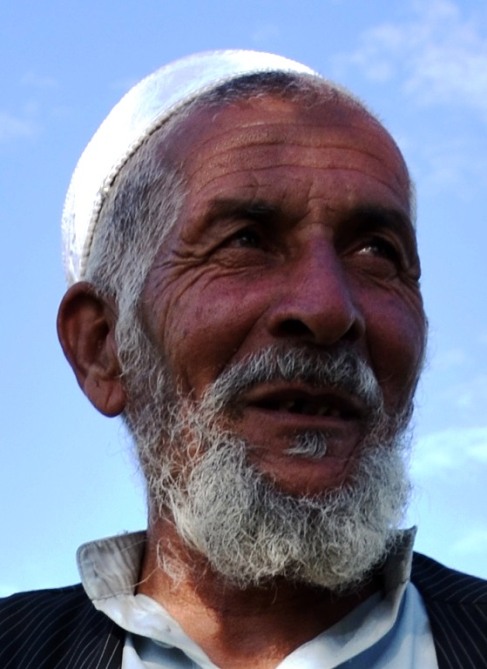
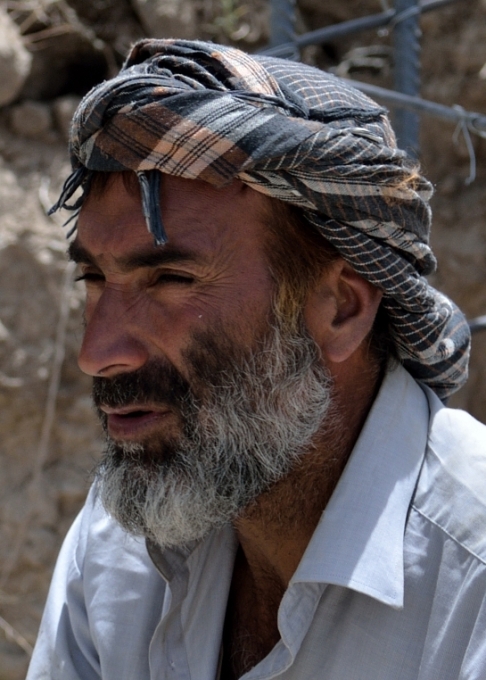

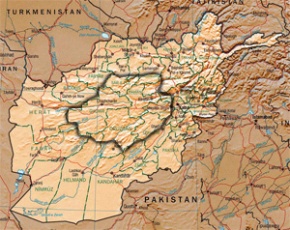
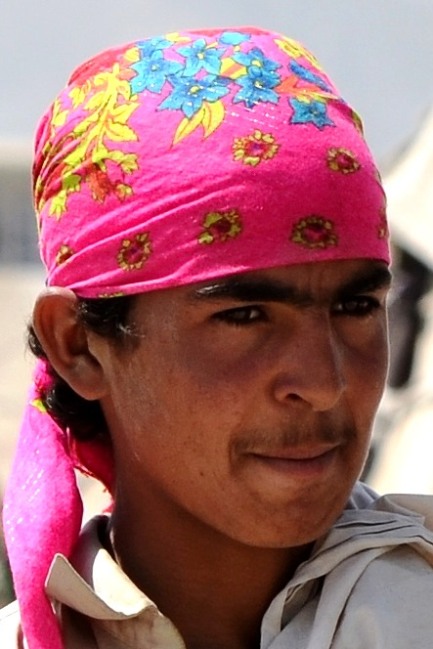
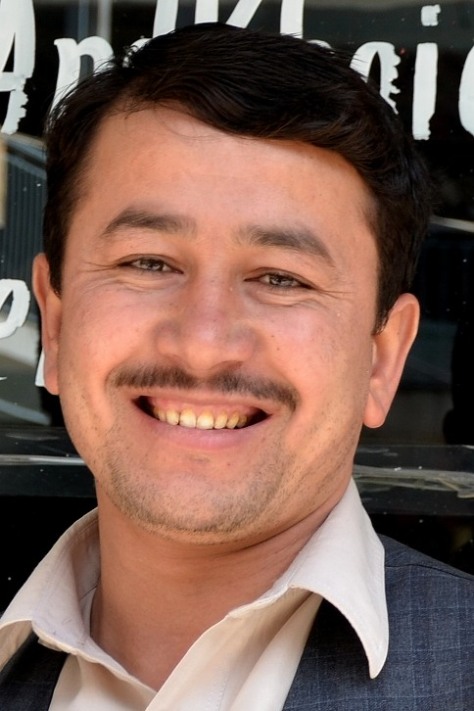
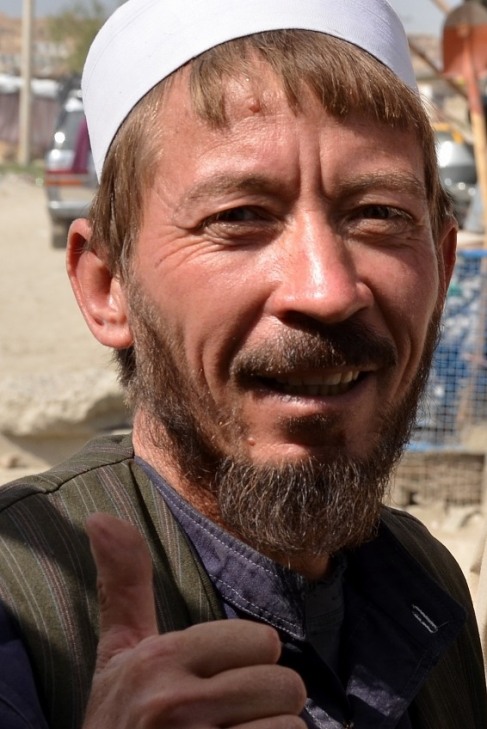
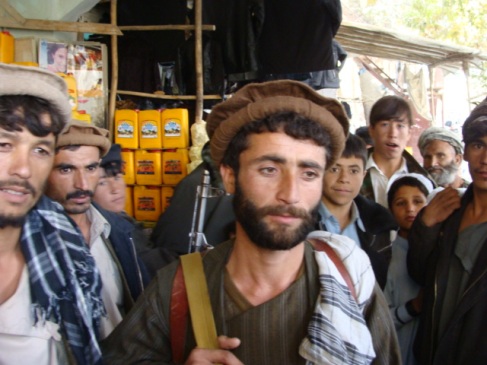

Pingback: Faces; A Quick and Dirty Study on Ethnicity in Afghanistan | hotmilkforbreakfast
As usual, I am smarter for reading this. Thanks D!
Thanks. It’s not that I am some kind of expert, it’s that this is simple and easy. Doesn’t require a PhD, or to do years of research. All this data is out there (except the population distribution fibbing) wherever you care to look.
Excellent post!
Thanks. I really enjoyed writing it, as I still kind of hold a grudge against certain of the “fine individuals” in ISAF.
Spectacular Piece. First hand knowledge and perfectly written.
Thank you.
A great post but it is depressing in the sense of the incompetence of the people you describe.
Yes. Depressing it is.
I admire all of your work!
You could teach a class on this!
Thank you. That’s one of the goals of this blog; education about something many claim to “know all about” yet know little.
Drew eloquently elaborated on the “non-existent” issue of ethnic politics in Afghanistan. ISAF’s policy is “If I close my eyes the ghosts in my bedroom will go away by the time I wake up.” The juvenile way of attempting to understand the complexity of Afghanistan’s ethnic diversity and resulting ethno-nationalist issues, stems from a simple fact of ignoring…well, ignoring Afghanistan. Geographer Nigel Allan, one of the very few people who, in my opinion, truly understand the cultural conditions in this region has stated that Afghanistan is not a place; rather, it’s a space (N. Allan, 2001, Defining Place and People in Afghanistan. Post-Soviet Geography and Economics, 48(8): 545-560).
If one begins with a premise that an established “knowledge” about Afghanistan, so prevalent among those of securing it, is fundamentally incorrect, then we can fully understand why our policies there have failed. In most instances, however, such views are silenced.
Ultimately, our policies in this part of the world revolve around the issues of convenience, highly stimulated with an immense amount of ignorance and unwillingness to learn beyond the stereotypical misconceptions (at the commanding heights, not at the low level where some of our finest people operate in the field). Yet, somehow, the powers that be will always find the way to justify their ignorance and incompetence and blame others for their failures without ever facing repercussions.
War in Afghanistan, even more than the war in Iraq, has exemplified the inability to operate in the environment where issues are not black and white. And that’s why we (the West) are paying the price.
Let’s make it clear that this is not a political statement. I could care less about the politics. This is an observation from a cultural geographer whose job was to understand the people and culture in Afghanistan and help prevent a loss of lives. On all sides.
Interesting perspective you share regarding the ethnic make up of modern day Afghanistan.
I must say, with regards to the numbers you present, e.g. Hazaras making up 20% of the Afghan population, do you have any academically acclaimed sources to support this?
Even amongst Hazaras within Afghanistan, this is too high a percentage and likelihood is that we are more at 7.5%.
Sources… Therein lie the rub. There are no real sources for ethnic make up in Afghanistan, academic or otherwise. To ask for “academically acclaimed” sources is kind of a bad joke. No one has done the real work of counting people, so anyone who claims to have “valid” numbers is lying.
The 19% number is arrived at through using the Ministry of Hajj’s number of 19% Shi’a, which may be closest to the truth, (though probably suffers from bad math), subtracting the less than 1% who are Qizilbash, and wondering “who in the hell else is Shi’a in Afghanistan?” Of course, there are some Hazara who mis-assign their ethnicity on purpose to avoid persecution and there are Hazara who convert to Sunni for the same reason.
There is also the birth survival rates. Nearly half the population of Afghanistan is under the age of 15, due to rapidly accelerating birth rates (also an arguable number). Hazara are having a disproportionate birth survival rate due to urbanization and the ability of Hazara women to more readily access health care. Hazara, if they keep reproducing and have babies that survive, will rapidly expand their population in the future relative to Pashtun, or even Uzbek or Tajik.
It also comes from checking Central Statistic Office and other agencies’ numbers by physically driving to those places and counting faces, listening for self-identification cues and noticing that “crap, there are a lot more Tajik and Hazara out there than we are led to believe”.
If I may ask, where did you arrive at your 7.5%?
Well, similar to you, it would be an assessment of the aesthetics of Afghan. Amongst us Hazaras (local or diaspora) it is a somewhat common consensus that we are sub 10%.
Kızılbaş means red-head in Turkish cause Kızılbaş army soldiers wore reddish stuff on their hats, they are Azerbaijani-Anatolian Türks, between 900’s to 1920’s todays iran was ruled by Türks and this leads to confusion, todays iran’s western lands are free of persians, ” fars ” region is the eastern region
Im pashtun ma whole family is blonde and i believe we got greek blood in us
That’s entirely possible. There are also rumors of Scandinavians who traveled overland as far southeast as Afghanistan. Bottom line; no one really knows the absolute origins of the Pashtuns; chances are they are an admixture, as everyone else is. Thanks for the comment!
Ok…… I’m pretty sure that the “greek” theory has been dubunked. The greeks did actually gain a foothold in cities like Balkh but actually saying that “blonde” hair came from the greeks is an erroneous statement at best. The people of Swat and nuristanis all say the same thing…. But its not true. The greeks never settled down enough to leave a genetic impact on the local population, contributed sure, but nothing significant really.
I agree that the folk stories about “Greek” and “Blond” Afghans are not linked. Greeks tend to be dark. I do tend to wonder how much Scandinavian blood made it into Afghanistan, though. For sure Nuristani folk art is strongly reminiscent of Norse folk art, and they do look pretty Norse.
The thing that makes ethnicity so relevant and interesting in Afghanistan, is a) the fact that it is a genetic mixing bowl, and b) it’s also a highly geographically segmented country, which allows for areas of specific genetic homogeneity at the same time.
Well…. I can’t say no to that. About greek and norse blood among some afghans,well i don’t know much about that, but i have actually seen my fair share of blonde afghans. I’m afghan too…. Though certainly not blonde. 🙂 the thing about folk in this country is that nobody will be able to come up with a coherent answer when it comes to such things…. Its all a BIG muddle. And its like you said… A melting pot of different peoples who came together and made up today’s Afghanistan. I don’t know…. I’m in a conundrum in this, same as everyone else. Though nice effort, on portraying the different peoples of this country, not very subjective but still good.
Thank you. I think your comments are accurate and well-stated. My intent is not a dry, objective data dump, of course. I am more interested in narratives. And it is my opinion that there are several caustic narratives that some people use in order to fracture, gain favor, and even put themselves into unnecessarily subordinate positions, in Afghanistan. America is in a similar position, with the advantage of being immensely wealthy. The players are not the same, but the narratives are similar. I think we’d both agree that if we could remember our roots without allowing them to be divisive as the ideal solution, here.
My partner is Afghan Sunni Pashtun. He verified this. Thank you. Afghanistan is a unique country with such a long, varied, intriguing and important history. As a westerner, I cannot visit while the conflicts create so much instability and danger. As of 2015, westerners are at great risk, but I dearly want to go there. I hope, globally, people come to appreciate Afghanistan more than they do now. And I hope all tribes that share this wonderful landscape learn to appreciate their countrymen and look after one another.
your comment about the military not recognizing the sectarianism of Afghanistan was very prescient considering current events.